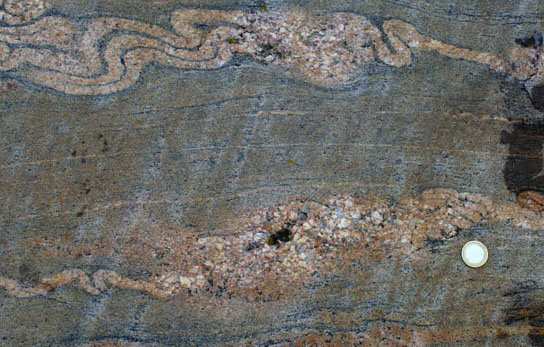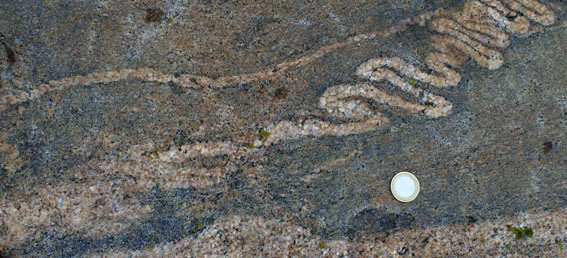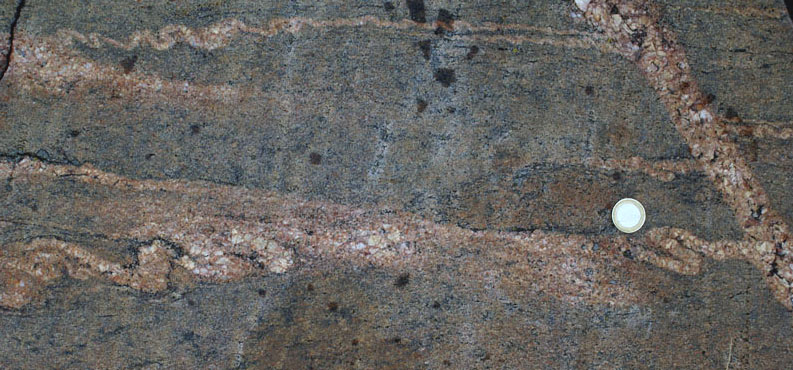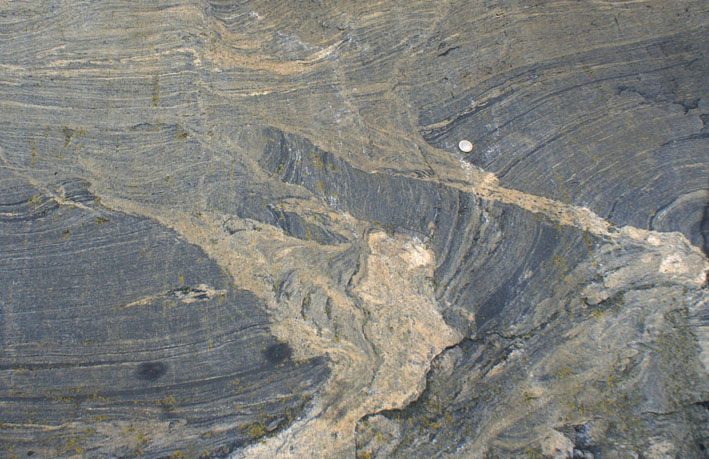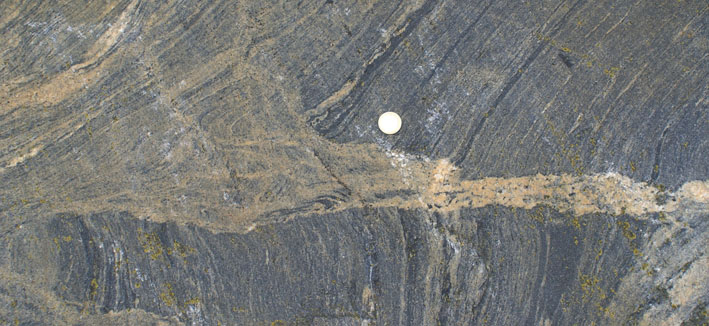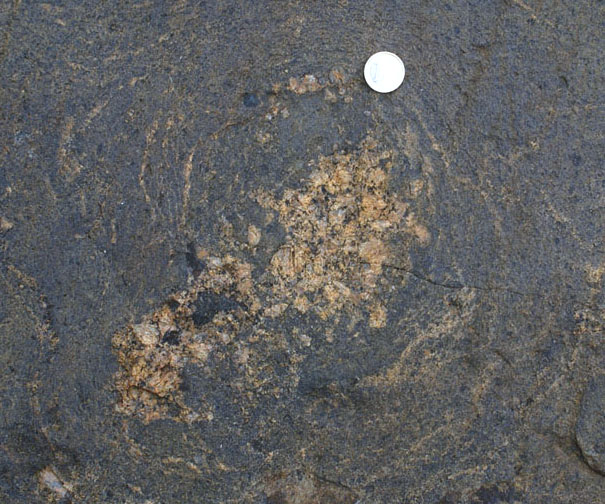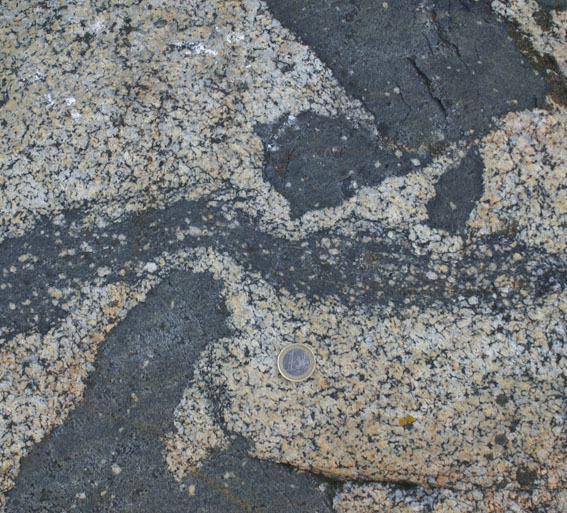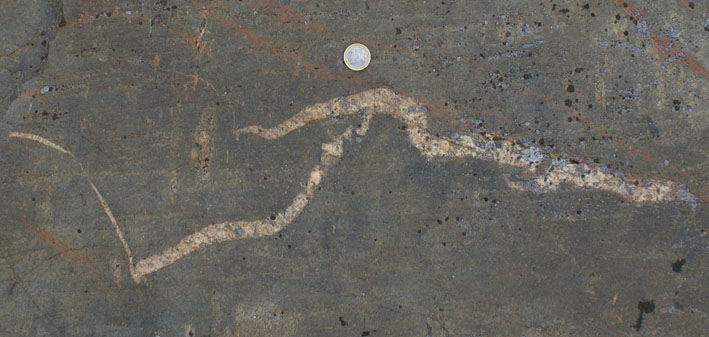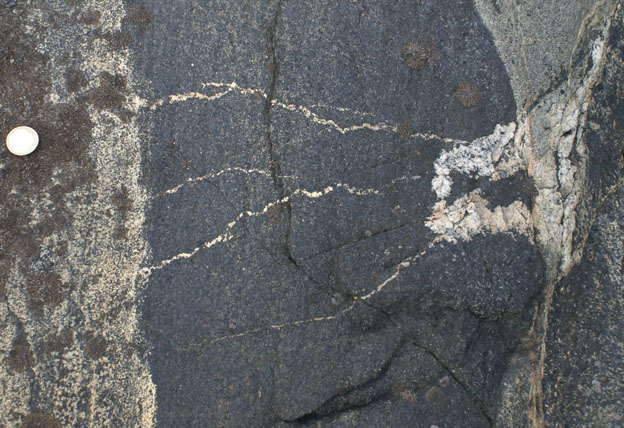100 years of migmatites - in Sederholm's footsteps: On migmatites and associated Precambrian rocks of SW Finland"
33rd IGC
Sederholm Symposium Field Trip August 2008
led by Olav Eklund, Carl
Ehlers and Markku Väisänen
Roberto Weinberg, Monash University, Australia
Contents
a) Cordierite-Garnet Migmatite, Masku Riviera, N of Turku (Stop 29 guidebook, N6724734, E3233489)
step 1. melting during folding (Fig. 1a), little melt escape through spaced axial planar leucocratic dykes (Fig. 1b)
step 2. Cooling during continued folding, spaced shear bands filled-up with melt (Fig. 1c), link with (Fig. 1b) and locally displace early formed axial planar dykes
b) Ptygmatic folds and their disruption, Brändöharum (stop 3 in guidebook; N6657490, E3345404) in Sederholm 1926, Bull. Comission Geol. Finlande 77
|
|
|
|
Figure 6a) Ptygmatic fold with
well-defined folded margins merging continuously with a diffuse leucocratic patch elongated parallel to the main foliation. |
Figure 6b) |
c) Migmatites from Spikarna (N6633592, E3287503) in Sederholm 1907: melt seggregation and extraction from migmatitzed pre-orogenic supracrustals and synorogenic tonalties
d) Magma Mingling
e) Ductile Fractures
f) Partial Melting at Dyke Margin in Peperite, Enklinge island (Stop 12 in guidebook, N6706142, E3155693)
g) Brecciation and assimilation of calc-silicate roof pendant in the central part of the Åva intrusion (Stop 19 Nottholm N6720892, E3173346)
|
|
|
|
| Figure 17a) Breakup of roof pendant. | Figure 17b) Breakup of roof pendant. | Figure 17c) Assimilation of calc-silicate roof pendant in granite. |
h) Ladder dyke.
(N67..., E31...)
